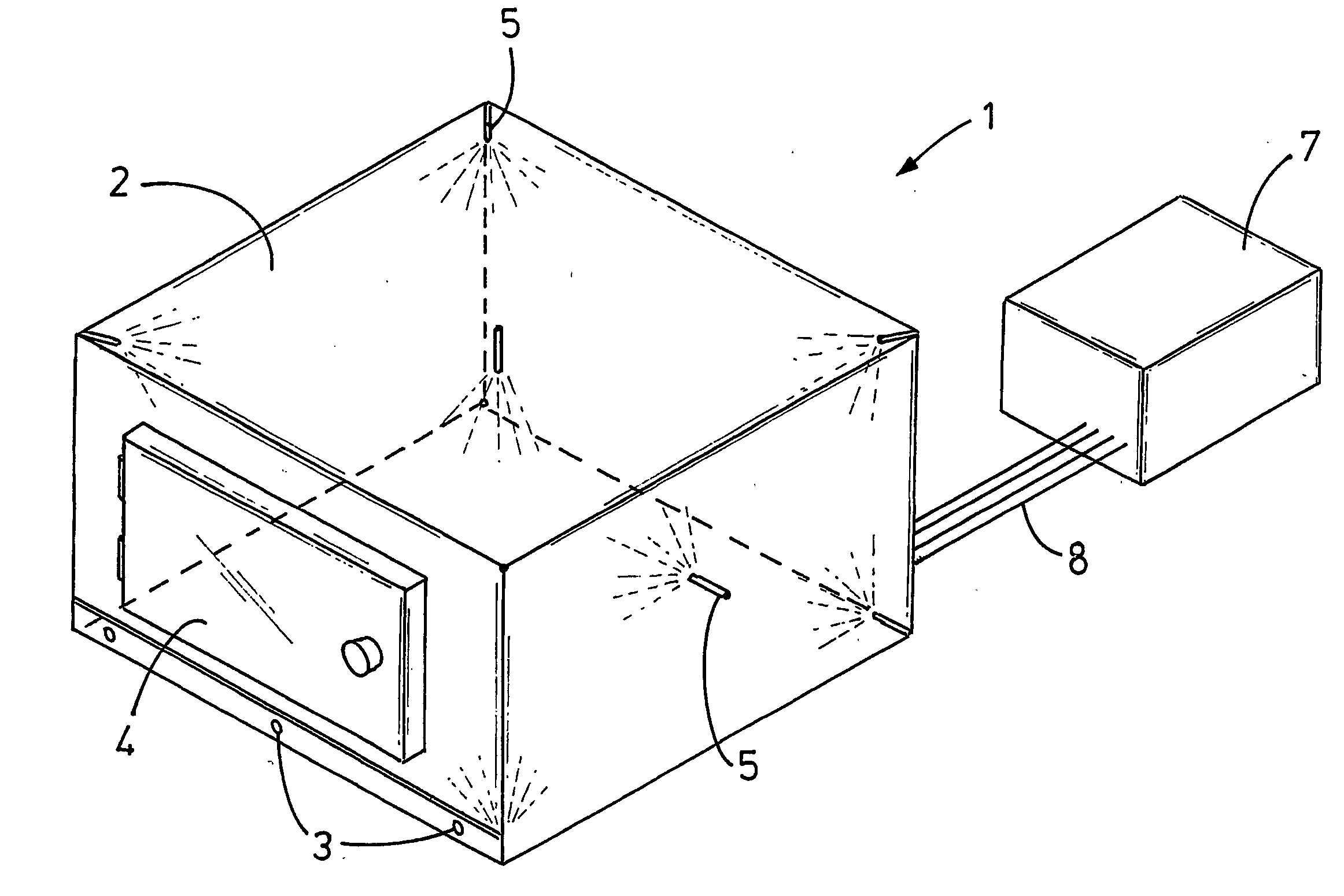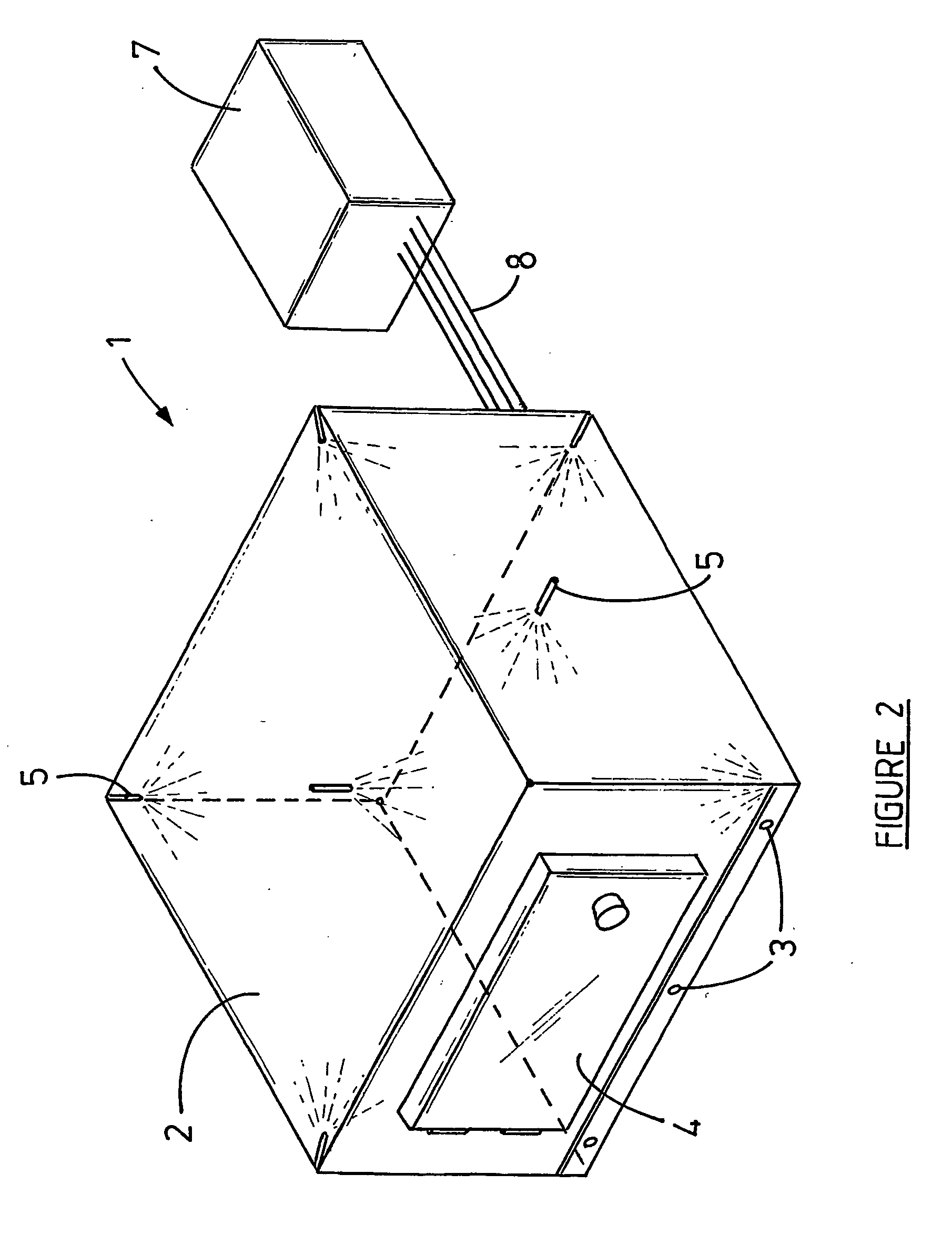Method of and equipment for washing, disinfecting and/or sterilizing health care devices
a technology for health care devices and equipment, applied in the direction of lavatory sanitory, water installations, constructions, etc., can solve the problems of pathogenic microorganisms and biofilms on the surface of such devices, methods are generally time-consuming and costly, and require suitable apparatus, etc., to achieve the effect of being effective and inexpensiv
- Summary
- Abstract
- Description
- Claims
- Application Information
AI Technical Summary
Benefits of technology
Problems solved by technology
Method used
Image
Examples
Embodiment Construction
[0061] An embodiment of the invention will now be described by means of a non-limiting example only and with reference to the accompanying drawings wherein
[0062] FIG. 1 is a flow chart of he method according to the invention; and
[0063] FIG. 2 is a diagrammatic illustration of an apparatus according to one embodiment of the invention.
[0064] The basic electrolytic cells used to generate the electrolytically activated solutions utilised in this specification are substantially as disclosed in U.S. Pat. No. 5,635,040. The cells are modular units, and, in various reactor configurations or devices, form the basis of the equipment disclosed in this specification, with the operational specifications for the reactors being optimised for each specific application. Particularly, the electrochemical reactor may be a so-called Flow-through Electrolytic Module (FEM) as also described by Bakhir in U.S. Pat. No. 5,427,667.
[0065] The cell includes a cylindrical metal vessel typically about 210 mm lon...
PUM
| Property | Measurement | Unit |
|---|---|---|
| diameter | aaaaa | aaaaa |
| flow rate | aaaaa | aaaaa |
| flow rate | aaaaa | aaaaa |
Abstract
Description
Claims
Application Information
 Login to View More
Login to View More - R&D
- Intellectual Property
- Life Sciences
- Materials
- Tech Scout
- Unparalleled Data Quality
- Higher Quality Content
- 60% Fewer Hallucinations
Browse by: Latest US Patents, China's latest patents, Technical Efficacy Thesaurus, Application Domain, Technology Topic, Popular Technical Reports.
© 2025 PatSnap. All rights reserved.Legal|Privacy policy|Modern Slavery Act Transparency Statement|Sitemap|About US| Contact US: help@patsnap.com



